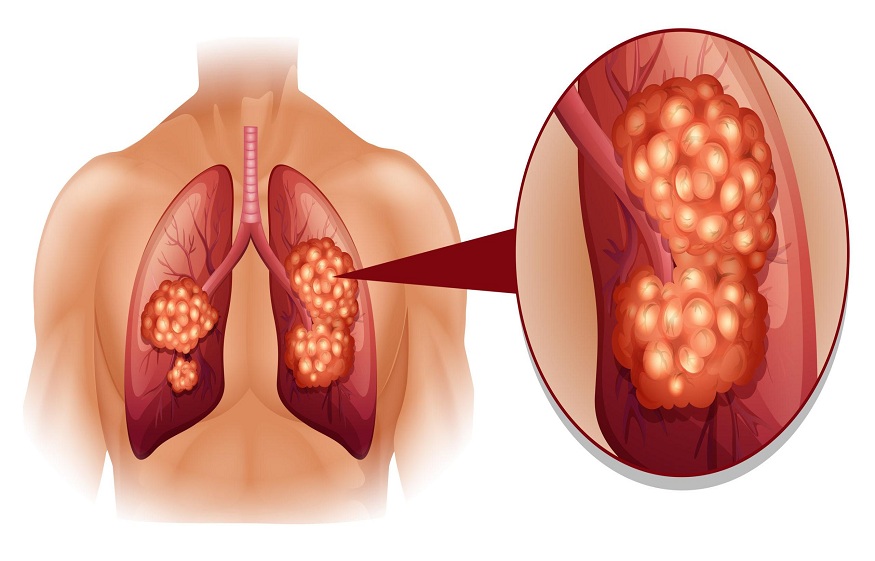Prevention is the best weapon against this disease since more than 80% of lung cancer cases increase in incidence among women due to exposure to tobacco smoke.
Lung cancer is a malignant tumor in the lung or bronchi and may extend to other locations such as the brain, bone, liver, and lymph. It is the most deadly malignant tumor, being the second in frequency among men, behind prostate cancer, and the second most common among women, behind breast cancer. It accounts for more than a million deaths annually worldwide. And in the cases in which it survives, the consequences of a lung or one of its lobes extirpation can generate a significant respiratory limitation in patients who usually have a diminished lung reserve.
There is a direct relationship between smoking and lung cancer – tiny cell or small cell cancer – and this is where you can begin to beat this disease. In fact, in the last decade, there has been a slight decrease in its incidence due to the success of anti-smoking campaigns and their awareness. Unfortunately, approximately 85% of patients die five years after being diagnosed, since in many cases, the tumor is widespread at the time of diagnosis. Up to 50% of cases are diagnosed in a locally advanced stage. It may initially manifest as a solitary nodule on an x-ray performed for another reason, and only if biopsied can this nodule be identified as malignant. In this initial situation, the cure rate is higher.
More than 80% of lung cancer cases derive exclusively from exposure to tobacco smoke. All this indicates that despite its high mortality, it is one of the most preventable cancers. However, although tobacco is the main responsible for this condition’s appearance, anyone can develop lung cancer. And it is that other environmental, metabolic, genetic, hormonal, and nutritional factors, maybe somehow be involved in its appearance.
Mortality associated with this tumor continues to increase since, in the first five months of 2020, lung and bronchial cancer has been the deadliest.
Lung cancer, increasingly common in women
Lung cancer is one of the deadliest and with the highest incidence. In the last 30 years, there have been many campaigns against smoking, and this, together with the development of new treatments, has contributed to a marked decrease in the number of men who die from lung cancer. In contrast, the number of women with lung cancer has increased because more women are smokers than before.
Causes of lung cancer
The lungs are organs that are made up of many types of cells. The most numerous are epithelial cells, which transfer oxygen to the blood, but hormonal muscle and fibrous cells are for support.
The majority of lung cancers originate from inhaling carcinogens (more than 3,000) found in cigarette smoke. These substances come into contact with the cells of the lung and are capable of altering them in such a way that they begin to multiply uncontrollably, thus forming an accumulation of malignant cells known as a tumor (also a lump, lesion, or nodule). Cancer will cause complications in the lung itself, and again, some of these malignant cells may pass into the blood or lymph and spread to other areas of the human body, giving rise to so-called metastases.
For all these reasons, and even though not all lung cancers are due exclusively to smoking, talking about lung cancer is talking about tobacco. In general, the risk of a smoker developing lung cancer is 13 times higher than that of a non-smoker, and in the case of passive exposure to tobacco ( passive smokers ), the risk is 1.5 times higher than that of a non-smoker.
There is a direct relationship between death from lung cancer and the number of cigarettes smoked during a certain number of years (measured by several packs per day-year); thus, a person who has smoked more cigarettes for a longer time will be at higher risk than a person who has smoked less for less time.
Other causes of lung cancer
As discussed, some lung cancers are not due to tobacco. There are other possible causes involved in its appearance:
- Asbestos, in those factory workers where these materials are used. Asbestos is a component that was common in fiber cement, and the fibers were inhaled, being highly carcinogenic. For this reason, at present, this type of fiber cement requires particular intervention in its disassembly.
- Pollution or pollution of large cities is mainly derived from the combustion of diesel engines.
- Radiotherapy. Treatment of other tumors that have required chest radiation therapy may increase the risk of lung cancer.
- Lung diseases such as fibrosis, COPD, and tuberculosis.
- Genetic factors. They would explain its appearance in cases where there is no active or passive smoking.
- HIV infection, where the risk is four times higher than the rest of the population, is about higher tobacco consumption in this population group.

